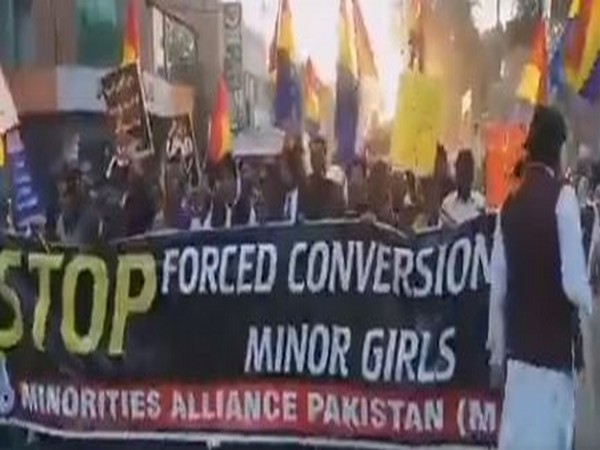Pakistan’s dilemma of forced conversions and marriages put minority women at risk and the issue of securing rights for minority women has become particularly complex in Pakistan.
As Pakistan moves in an increasingly conservative Islamist direction, the situation for Hindus, Christians and other religious minorities, especially that of women, is worsening, reported International Forum for Right and Security (IFFRAS).
The situation faced by the Hindu and Christian groups in Pakistan is bad in general, but women from these communities are the worst victims of discriminatory attitudes of the authorities, political groups, religious parties, the feudal structure and the Muslim majority.
Religious minority women and girls are abducted, forcibly converted, forcibly married and abused, and their families are unsuccessful in their attempts to challenge these crimes using legal avenues, reported IFFRAS.
While the abductions, forced conversions, forced marriages and abuse are perpetrated by individuals, the fate of religious minority women and girls is often sealed as the existing laws or handling of such cases deem any legal recourse unavailable or ineffective.
Human rights groups have documented the plight of Pakistan’s religious minorities for years, but it is only recently that these minorities have become the focus of popular discourse because of revelations on social media regarding their treatment, reported IFFRAS.
On the evening of August 20 in the Buner district of Khyber Pakhtunkhwa province of Pakistan, Dina Kaur, a teacher belonging to the Sikh community, was forcibly abducted and converted to Islam. Despite massive protests by the Sikh community in the Khyber Pakhtunkhwa province over the incident, local police have failed to initiate any investigation into the abduction and forcible conversion of Dina Kaur.
Abducting for the purpose of forced conversion and marriage is a major issue in Pakistan. Most of the victims are Christian and Hindu girls and young women, forced to wed against their will to much older Muslim men.
The plight of women in Pakistan is increasing day by day as a fresh report has stated that nearly 6,754 women were abducted in the country’s Punjab province in the first half of 2021. Out of that, 1890 women were raped, 3721 were tortured and 752 children were raped, Duniya News reported.
In the districts of Badin, Mirpukhas, Sanghar, Umer Kot and Tharparkar, the Hindu women were enslaved because of religious hatred and debts claimed by their masters. They are subjected to abduction, rape, arbitrary arrest, torture, displacement and killings, reported IFFRAS.
The Hindus in these regions say that two madrassas — Dargah Pir Bharchundi Sharif and Dargah Pir Sarhandi — are “symbols of terror and fear”.
Harris Khalique, writer and Secretary General of the Human Rights Commission of Pakistan, said that madrassas provide an “institutional backing and that cannot happen if the state does not allow that. I rest the responsibility of such incidents squarely on the state, which fails its citizens.”
The abduction and abuse of Dina Kaur is not a one-off incident. In September 2019, Jagjit Kaur, daughter of a local Sikh Granthi, was abducted at gunpoint from Nankana Sahib. Her abductor Mohammad Hasan forcibly converted her to Islam and married her.
In 2019, two sisters Reena Meghwar and Raveena Meghwar, suddenly disappeared from their home in Daharki, a city in Ghotki district of Sindh province. Both the girls later surfaced in Rahim Yar Khan district of Punjab, married to Safdar Ali and Barkat Ali, both of whom were already married and had children.
A 2015 report by the South Asia Partnership-Pakistan in collaboration with Aurat Foundation found that at least 1,000 girls are forcibly converted to Islam in Pakistan every year. In a recent case in September 2022, Bhagwanti, a Hindu teenage flood victim girl from Shahadapur, Sanghar, Sindh, was raped for two days while she went out to get a paltry ration, reported IFFRAS.
Each of the girls shares the same fate of abduction, forced conversion, forced marriage and abuse. They also share similar characteristics – all young, underage, and belonging to religious minorities. Their stories continue to be invisible, reported IFFRAS.

